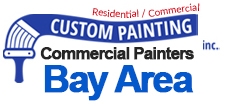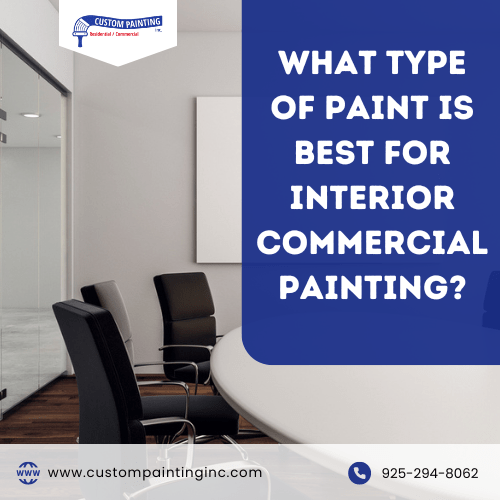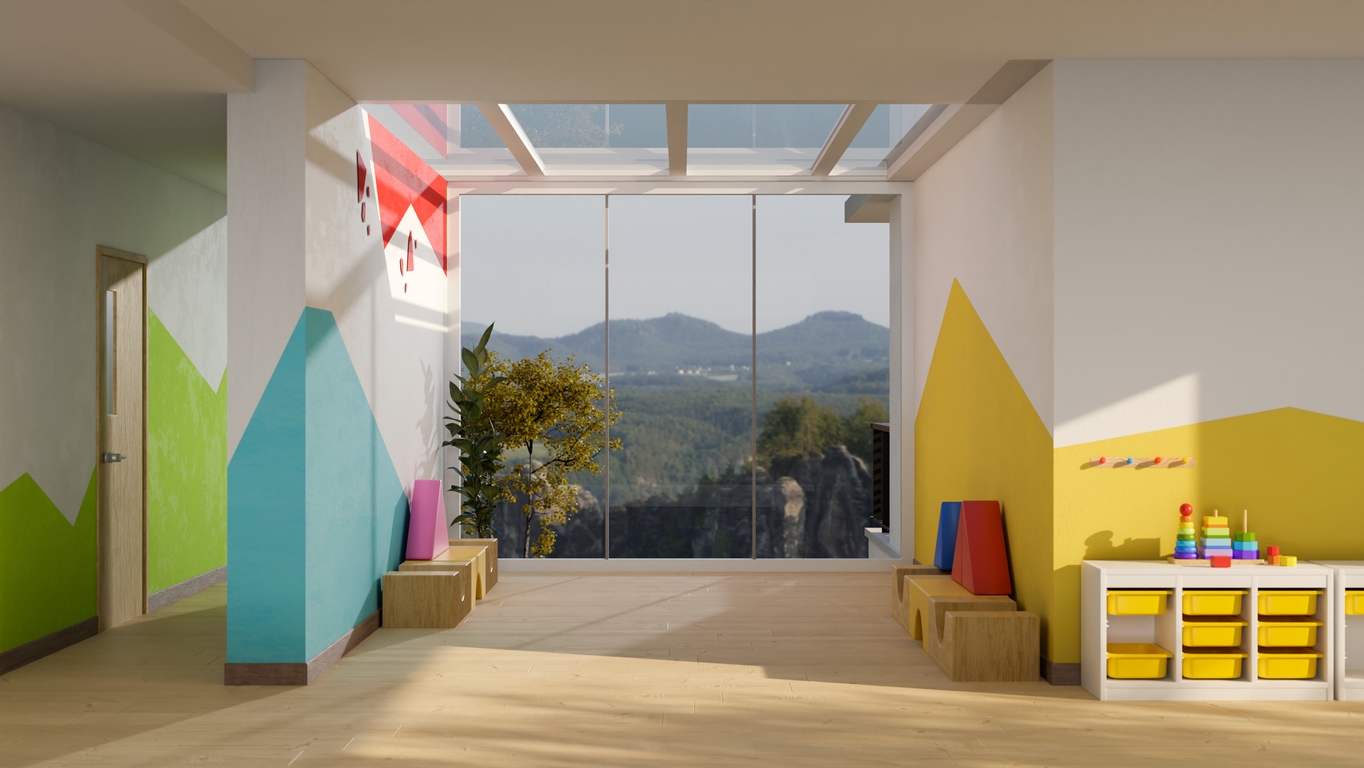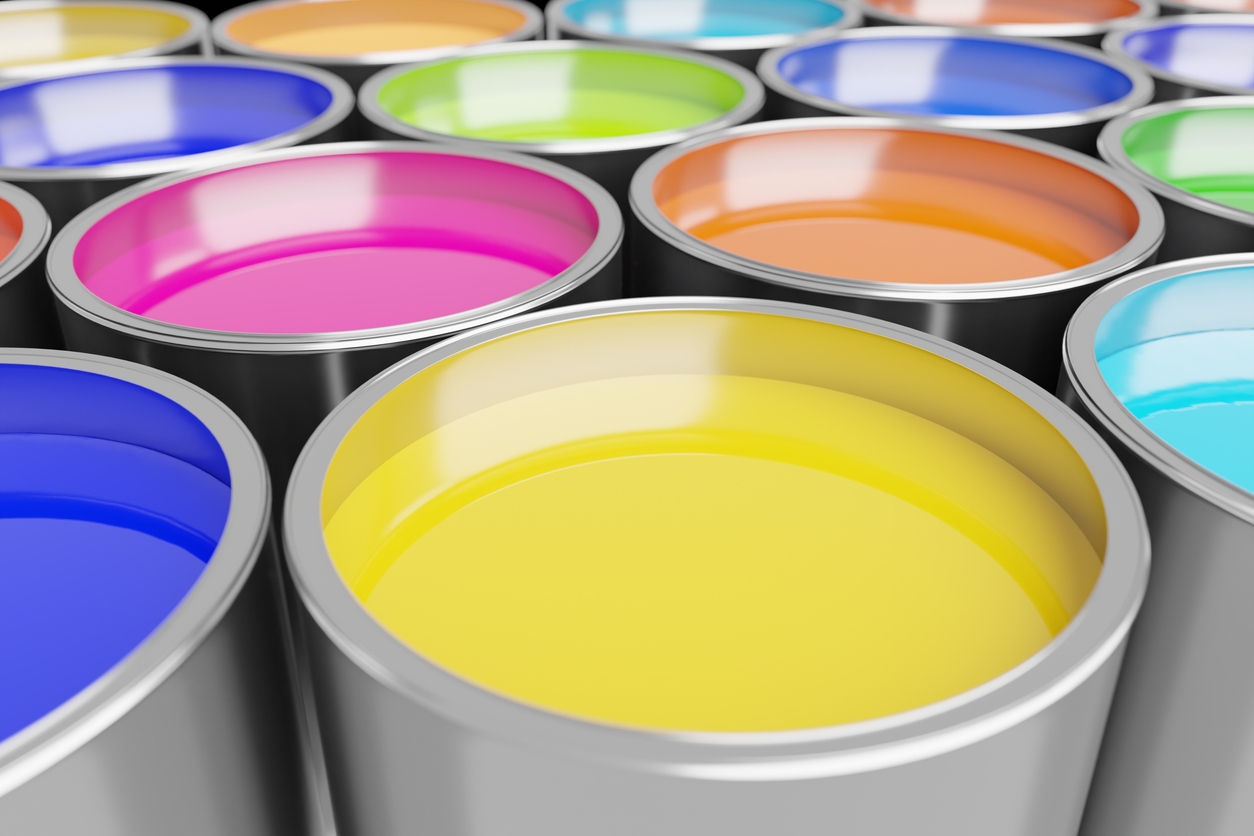Who would have thought that a simple coat of paint could significantly impact your customers, workplace, or company branding? Paints enhance the appearance of buildings and protect and maintain their structural integrity. That’s why regular interior painting in the Bay Area is essential.
Different renovations require different types of paint and application methods. In this article, we’ll explore various types of paint and their finishes to consider for your commercial painting needs. Whether you’re looking for durability, aesthetic appeal, or specific functional properties, choosing the right paint can make all the difference.
The Best Types of Paint for Interior Walls
Choosing the right type of paint for your interior walls is crucial for both aesthetics and durability. Here are some of the best options available:
1. Latex Paint
Latex paints are a popular choice for interior walls due to their availability, affordability, and wide range of colors and finishes. They contain synthetic binders like acrylic resin and polyvinyl acetate, making them easy to apply, quick to dry, and simple to clean with soap and water. However, they are less durable and not suitable for high-moisture areas.
Suitable for: Low- to medium-traffic areas such as conference rooms, waiting areas, and bedrooms in multi-family homes.
2. Acrylic Paint
Acrylic paints are similar to latex paints but contain more acrylic polymers, making them thicker, more durable, and flexible. They are also easy to clean with soap and water. Acrylic paints are more expensive but are versatile and can be used on various surfaces, including wood, metal, vinyl, and glass.
Suitable for: High-traffic areas like hallways, back rooms, kitchens, restrooms, and offices.
3. Emulsion Paint
Emulsion paints use water as the primary medium and contain binders like polymers for structure. They are non-toxic, durable, long-lasting, and resistant to cleaning and scrubbing. Emulsion paints dry quickly and are flexible, reducing the risk of cracks and chipping.
Suitable for: General interiors, including offices and commercial spaces.
4. Enamel Paint
Enamel paints can be water- or oil-based, forming a hard, glossy coating once dry. They are resistant to moisture, oil, grease, and chemicals, making them easy to clean. However, they take longer to dry, which might slow down business operations.
Suitable for: Interior walls, flooring, metals, glass, masonry, and even furniture.
The Best Paint Finishes for Interior Walls
When painting your interior commercial spaces, choosing the right finish is as important as choosing the right color. The type of paint you choose can significantly affect your customers’ impression and workplace morale. It’s essential to consider the amount of traffic a commercial space gets regularly and how often it will require cleaning. Here’s a simple guide to the best paint finishes for different areas:
1. Eggshell Finish
Benefits: Low sheen, hides imperfections, and is resistant to moisture and scuffing.
Suitable for: Offices, conference rooms, webinar rooms, and common areas like break rooms.
The eggshell finish is popular for commercial projects due to its faint sheen and smooth, durable finish. It’s excellent for hiding surface marks and is suitable for low- to medium-traffic areas.
2. Satin Finish
Benefits: Soft sheen, washable, stands up to everyday wear and tear, resistant to scuff marks, stains, scratches, and moisture.
Suitable for: Kitchens, bathrooms, offices, break rooms, and reception areas.
The satin finish offers a shiny and durable look. Its resistance to wear and tear makes it ideal for areas that require frequent cleaning and have moderate foot traffic.
3. Semi-Gloss Finish
Benefits: High durability, moisture resistance, resistant to scratches, scuff marks, stains, water, oil, and grease.
Suitable for: Hallways, break rooms, kitchens, pantry rooms, restrooms, and storage areas.
Semi-gloss is shinier and more reflective than eggshell and satin. It’s highly durable and perfect for high-traffic and high-moisture areas. However, it can reveal surface flaws, so good prep work is essential before applying this finish.
How to Choose the Right Paint for Interiors
When selecting paint for your interiors, several factors should guide your decision:
- Durability: Consider the wear and tear in different areas. High-traffic zones like hallways need more durable paints such as acrylic or enamel.
- Aesthetics: Choose colors and finishes that complement your space and desired atmosphere. Matte and eggshell finishes can hide imperfections, while gloss finishes offer a sleek look.
- Environmental Impact: Opt for low-VOC or no-VOC paints to ensure better indoor air quality and reduce environmental harm.
- Moisture Resistance: Areas prone to humidity, like kitchens and bathrooms, benefit from moisture-resistant paints such as semi-gloss or satin finishes.
- Ease of Maintenance: Select paints that are easy to clean, especially in areas like offices and conference rooms where walls may need frequent cleaning.
- Surface Type: Ensure the paint is suitable for the surface you are painting, whether it’s drywall, wood, metal, or glass.
By considering these factors, you can choose the right paint to enhance the look of your interior spaces and meet the functional needs of different areas.
Conclusion
Choosing the right paint for your commercial interior is crucial for creating a professional and welcoming environment. You can select the best paint type and finish for each area by considering factors like durability, aesthetics, and environmental impact. Proper surface preparation and regular maintenance will ensure your paint job lasts and looks great.
For specific needs and expert advice, it’s always a good idea to consult professionals. If you need help with your commercial painting project, consider hiring Custom Painting, Inc. for top-quality service and results. Call us at 510-795-0903 to schedule an appointment to discuss your painting needs. You can also complete the contact form for a free estimate.



